
They have recommended that everyone in a household is familiar with the hurricane plans they’ve made. This may include catering for those at work, children’s daycare, and other frequently visited locations such as grocery stores.
Additionally, the government suggests that households should stock adequate supplies. Some recommended items are medications, disinfectants, and pet supplies that are carried in the go-bag or car trunk. Access to these supplies may be limited for days or even weeks after a hurricane.
Households also need to clear drains and gutters, secure outdoor furniture, and consider installing hurricane shutters. It is highly valuable to charge a cell phone and invest in backup charging devices for electronics when a hurricane is forecasted.
2. Stay Informed
In this step, it’s crucial for households to know if they live in an evacuation zone, listed at the end of this article, as they may need to evacuate quickly due to a hurricane. They should familiarize themselves with evacuation routes. They can also practice evacuating with their household and pets, and determine where they will stay.
Households should follow the guidance of local emergency managers, who collaborate with state, local, tribal, and territorial agencies. They will provide up-to-date recommendations based on the specific threats to your community and the necessary safety measures.
3. Check On Your Neighbors
Reach out to your neighbors, especially seniors or those who may require extra assistance, to ensure they have adequate hurricane plans in place. Offer your help in securing their preparations and provide support wherever needed.
4. Stay Out of Flood Water
Households should avoid entering floodwaters, as even six inches of fast-moving water can knock people off their feet. They should prioritize their safety and steer clear of any flooded areas.
5. Turn Around and Do Not Drown
People should be aware that just one foot of moving water can easily sweep away a vehicle. They should stay vigilant and avoid driving through flooded areas. Avoid walking, swimming, or driving through flood waters at all times. When encountering such a scenario, they should turn around.
6. Take Care of Your Mental Health
Lastly, individuals should prioritize their mental health during and after a hurricane. It’s important to acknowledge any feelings of anxiety or stress and seek support if needed. Connect with friends, family, or mental health professionals to discuss your concerns and find coping strategies.
Tampa Mayor Jane Castor has emphasized the need for households to pay attention to the evacuation zones as Hurricane Milton approaches Florida’s west coast. She warned the residents, “I can say without any dramatization whatsoever: If you choose to stay in one of those evacuation areas, you’re gonna die.”
Tampa is located in Hillsborough County. The region has listed compulsory evacuation orders for those in Zones A and B, as well as those who live in mobile homes. Tampa has urged residents of these areas to evacuate as Hurricane Milton is “literally catastrophic.”
Evacuation Zones
Charlotte County: It has issued a mandatory evacuation order for residents in Red Zone-A and Orange Zone-B, including those living in mobile and manufactured homes.
Citrus County: It has given a mandatory evacuation order that began on October 8, 2024, for all residents living in campers, tents, mobile homes, manufactured homes, or any structures unable to withstand sustained winds of up to 110 MPH.
Collier County: A voluntary precautionary evacuation is effective immediately for all residents in Collier County in Zones A and B. This includes west of Airport Pulling Road and south of US-41 Tamiami Trail E.
The order covers mobile home residents and areas with a history of storm flooding. A mandatory evacuation for all of Zones A and B began on October 8, 2024.
DeSoto County: It has issued evacuation orders for Zones A (Red) and B (Orange). These areas affect all residents living in mobile and manufactured homes, as well as those in low-lying or flood-prone areas.
Clay County: Currently, there are no mandatory evacuation orders, but residents in low-lying or flood-prone areas, especially along Black Creek or the St. Johns River, are strongly encouraged to consider relocating for safety.
Hardee County: On October 7, 2024, Hardee County Emergency Management advised residents in low-lying areas, mobile homes, recreational vehicles, and unsafe structures to evacuate as soon as possible.
Glades County: This county has implemented a voluntary evacuation for mobile homes, RV parks, and low-lying areas, which started on October 8, 2024.
Hillsborough County: This county has announced a mandatory evacuation for Evacuation Zones A and B, including all mobile homes and manufactured housing throughout the county, which started on October 7, 2024.
Hernando County: Mandatory evacuation orders for all areas west of US 19, including evacuation zones A, B, and C began on October 8, 2024. This includes all residents in coastal and low-lying areas, as well as those in manufactured homes countywide.
Levy County: A mandatory evacuation is in effect affecting all mobile homes, manufactured homes, recreational vehicle parks, coastal communities, and low-lying areas west of US 19. Hurricane risk shelters have opened at Bronson Elementary for special needs and Bronson Middle High School for general population/pet-friendly evacuations.
Lee County: It has issued mandatory evacuation orders for Zones A and B, urging residents to finalize emergency plans and evacuate as soon as possible. They should aim to be in a safe location by the evening of October 8, 2024.
Manatee County: This county has issued a mandatory evacuation for all residents in Levels A, B, and C, including visitors in RVs or mobile homes, effective October 7, 2024.
Marion County: The Marion County Sheriff’s Office Emergency Management officials have recommended evacuation for residents living in mobile homes, RVs, modular-type homes, and site-built homes constructed before 1994 due to the hurricane’s projected path.
Miami-Dade County: This county has announced a voluntary evacuation center for residents of mobile home parks, opening the E. Darwin Fuchs Pavilion on October 8, 2024, as a pet-friendly evacuation option.
Okeechobee County: A voluntary evacuation has been issued for all low-lying areas and mobile homes starting October 8, 2024.
Pasco County: This county has mandated evacuations for Zone C as the hurricane approaches. Evacuations are required for those in Zones A, B, or C, as well as residents in manufactured homes, RVs, low-lying areas, or structures prone to flooding.
Volusia County: A mandatory evacuation order took effect on October 9, 2024, for all areas east of the Intracoastal Waterway, including residents in manufactured and mobile homes, low-lying and flood-prone areas, as well as campsites and RV parks.
Sumter County: Residents in mobile homes, low-lying areas, or with special needs are strongly urged to consider evacuation or relocating to a shelter when they open.
Sarasota County: Residents in Sarasota County living in Level A or near Level A, as well as those in manufactured home communities or mobile/boat homes, are advised to implement their evacuation plans immediately, whether that involves staying with friends or leaving the area.
Pinellas County: Pinellas County has enacted a mandatory evacuation order for all residents in Zones A, B, and C, as well as all mobile homes. Special needs residents and residential healthcare facilities in these zones are also included in the evacuation order.
Putnam County: A recommended evacuation has been issued for Zones F and A due to concerns regarding high river levels.
Obeying the directives issued by local authorities and noting the evacuation zones ensures that families can evacuate safely and efficiently. This also allows emergency services to respond effectively to those in need.
Single Dad Struggles Raising Triplets, One Day Finds Out They Aren’t His — Story of the Day

A man struggles to raise his triplets after his wife’s death, believing they were his own. However, things soon hit rock bottom one day when he meets a stranger in the cemetery and learns the babies he had been devoted to raising for so long were not really his.
Dried, rotten brown leaves crunched under Jordan Fox’s boots as he pushed his baby stroller into the Manhattan cemetery’s ornate gateway. Dry flowers and half-burnt candles were strewn across the lawn. A gust of wind howled through the row of Eastern red cedar, breaking the grave silence as he proceeded to his late wife Kyra’s tomb. It was her first death anniversary.
“We’re going to see mama…” he told baby Alan, one of his triplets resting his bulky diapered bottom on his left hip. The other two, Eric and Stan, lay in the stroller, watching the sky and babbling at seeing dragonflies.

For illustration purposes only | Source: Pexels
Upon reaching, Jordan’s heart raced at seeing a silhouette of a stranger, seemingly in his late 50s, standing near Kyra’s grave. The man adjusted his Irish cap as he leaned to brush the tombstone with the epitaph that read: A twinkle in our eyes & hearts is now on the skies. — In Loving Memory of Kyra Fox.
Jordan tried hard to remember but could not recognize the tall, stout man. “Who is he, and what’s he doing near my wife’s tomb?” he wondered and approached him…
“Amen!” said the man with a lopsided smirk as he finished with the sign of the cross, grimly turning around to greet Jordan. He smiled, eagerness filling his eyes as he raised his hand for a handshake but withdrew it as soon as his gaze shifted to the babies.
Jordan’s eyebrows narrowed in surprise. He wanted to know who this guy was and what he was doing at Kyra’s grave. As far as Jordan could recall, he had never seen this man around before…not even at Kyra’s funeral. “So, who is he then? And what’s he doing here?” Jordan was puzzled.
“I’m offering you $100,000! I’m ready to give you more if you want. Take the money and give me the babies.”
“You must be Jordan Fox…It’s a pleasure to meet you, Mr. Fox,” the guy uttered. “I knew you would come here today, and I was waiting for you. I’m Denis…from Chicago…Kyra’s ‘old’ pal.”
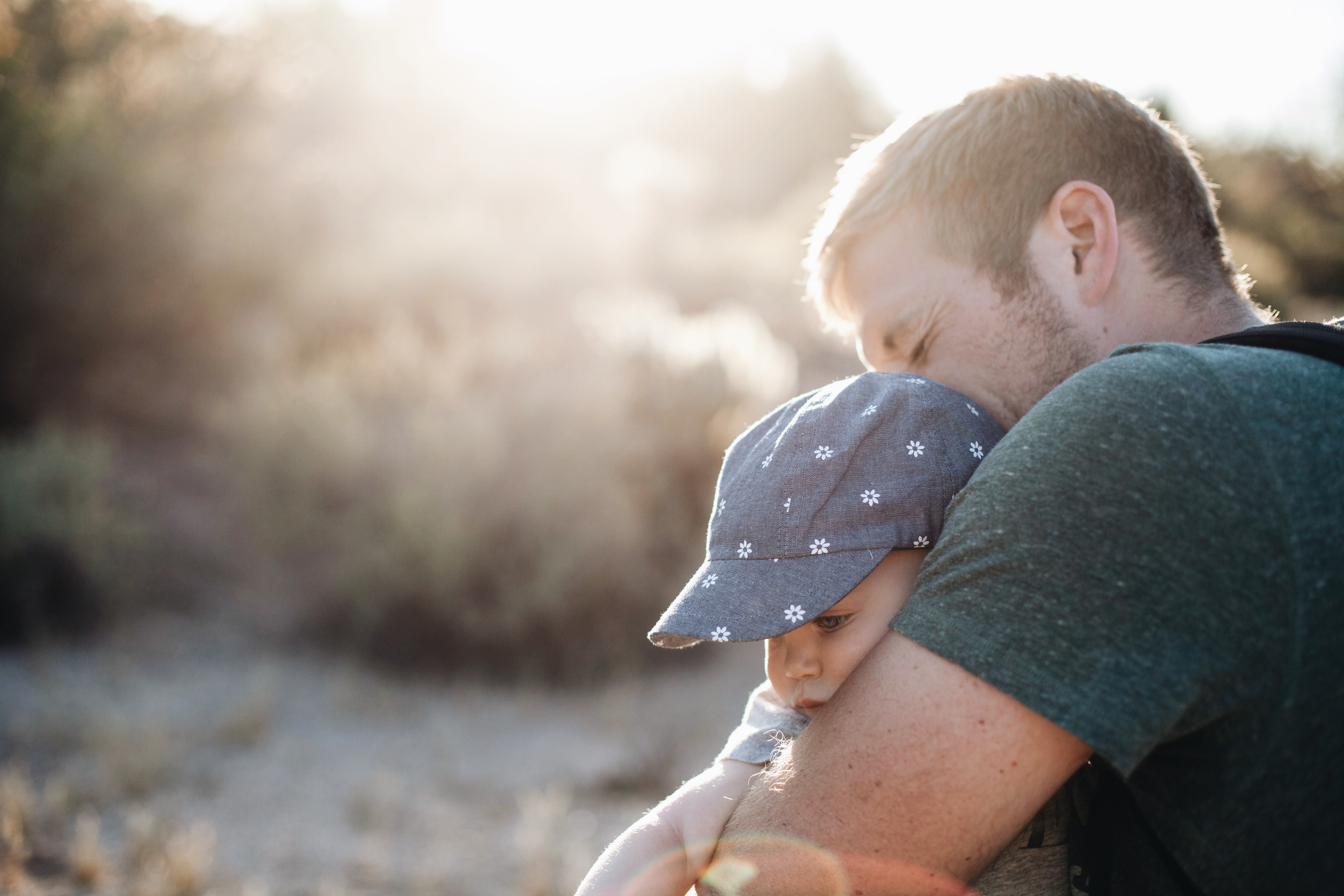
For illustration purposes only | Source: Pexels
Jordan was a little surprised because Kyra had never told him about having such a friend from Chicago who was old and whose name was Denis.
“Nice to meet you, Denis. I’m not sure I know you…Have we met before? I haven’t been to Chicago before.”
“Not really! I just arrived in Manhattan. I found out that…” Denis paused and gulped after seeing the babies again. “Can I see your babies…if you don’t mind?”
Jordan hesitated and pretended to ignore the man’s request because he was not ready to trust his tots with a stranger. Denis took that as a no but wouldn’t stop himself from walking forward and leaning over the stroller to see the other two babies.
“They are angels! Sweet little cinnamon rolls! They have my nose and eyes…and chestnut hair…” “And those big lashes…I had them when I was little!” blabbered Denis. He then looked up, saying the unthinkable Jordan was not prepared to hear.
“Mr. Fox, I know this might not make any sense to you, but…I know you’ll be wondering who I am and why I’m here. I’m the boys’ REAL FATHER, and I’ve come here to take them.”
“EXCUSE ME??” Jordan frowned and wanted to smack the man in the face for even saying this. He spared him for his age and tried to steal his way past him, thinking he was crazy.
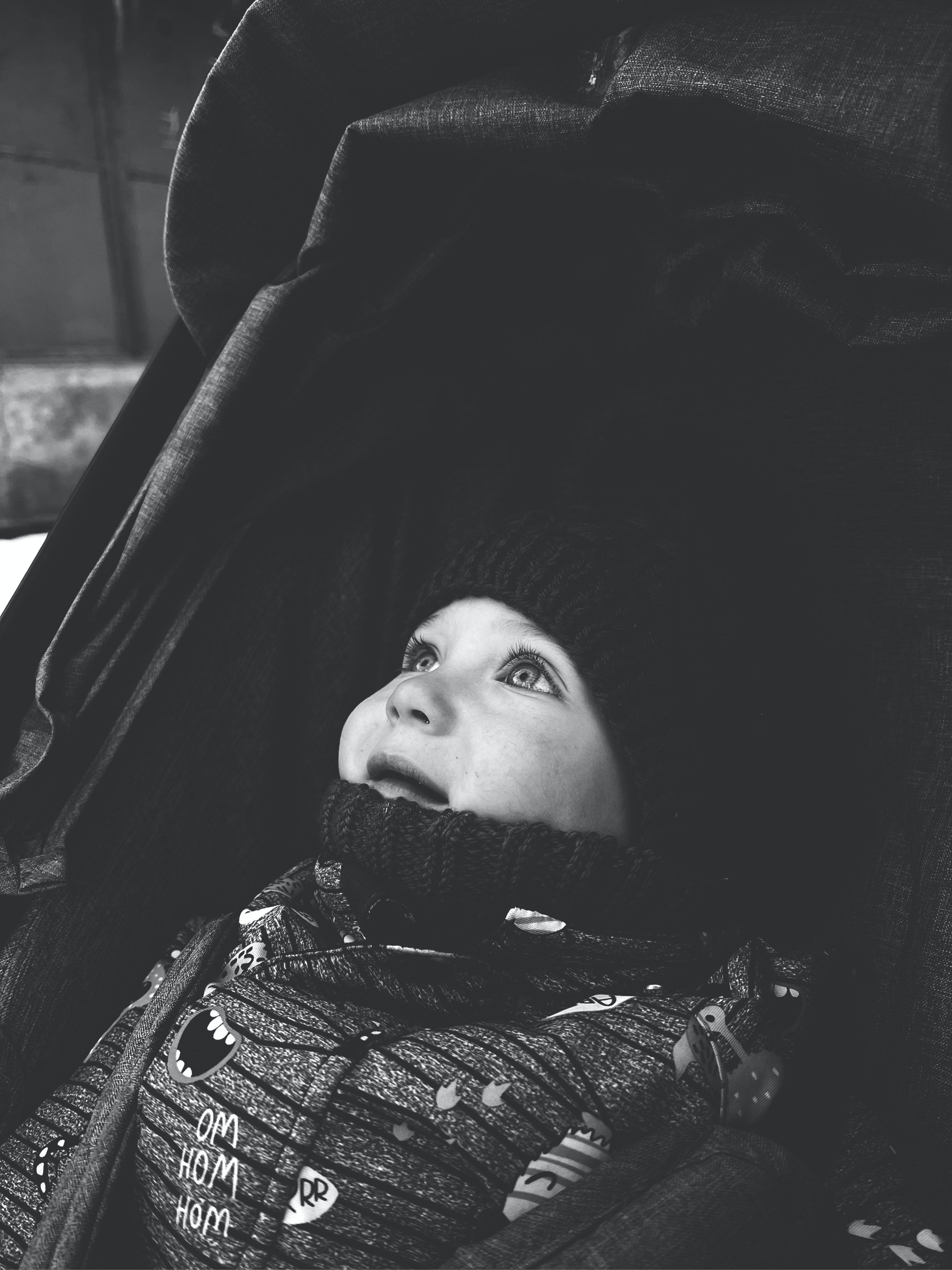
For illustration purposes only | Source: Pexels
“Mr. Fox, please believe me. I’m the father of the kids. A mistake I made in the past is still haunting me. I want to correct it before it’s too late. Please send the kids with me. I even have an amazing offer for you.”
“Are you crazy, old man? Get outta my way before I call the cops,” Jordan held the stroller and baby Alan tighter and ignored the guy.
But Denis wouldn’t budge, and he began disclosing intricate details about the late Kyra that startled Jordan.
“Kyra, your wife…She loved disco and bikes….was a brunette with a taste for art and French cuisine…Soupe à l’oignon and crème brûlée were her favorites. She was allergic to peanuts and had a small burn scar on her right thigh..and she had this…”
“ENOUGH…STOP!” Jordan yelled. “I don’t want to hear a word more about my wife. Who the hell are you, and how do you know all this? What do you want?”
“I told you I’m the father of her kids. Mr. Fox, I know it’s weird, and I cannot get custody of my children. I know that, okay? But I’m sure you wouldn’t want to waste your youth on them and will appreciate my company in raising them. You are young and charming and still have an entire life ahead of you. But look at me. I am old and have nobody other than these babies. I want them back. Please hand them over to me and move on.”
“Look, I don’t know what you’re talking about. And it’s none of your business what I need to do in life, okay? Are you outta your mind, old man? You sound crazy…Go get a life. I don’t know you and think you’ve mistaken me for someone…Back off. And stay away from my children.”

For illustration purposes only | Source: Pexels
“Mr. Fox, the kids are mine, and that’s the truth…and I’m ready to do anything to take them with me. But I don’t want to mess things up for you since you raised them for so long. So lemme get this straight — I’m offering you $100,000! I’m ready to give you more if you want. Take the money and give me the babies.”
“I know more about your wife Kyra than you know about her. Take your time and get back to me, alright? Here’s my card.”
Tears of shock and grief sprang into Jordan’s eyes. He could not believe Denis knew so much about Kyra. For a moment, he wanted to think it was a fib, and some random older man was playing a prank on him. Alas, Jordan could not get over Denis mentioning the burn mark on Kyra’s right thigh.
“It’s not a bribe, Mr. Fox. See, I want to thank you for raising my babies, okay? And you needn’t worry about anything. I’m fifty-seven and have enough experience in raising kids. You must be glad to put them in good, trustworthy hands. I know what you must be feeling. But don’t worry. Take your time to think about it and do get back. Call me on this number, alright? I’ll be waiting. Denis Roberts hates a no for an answer, so….”
Denis tucked a visiting card into Jordan’s hand and hurried away, leaving him with more than just a shock and a heartbreak.

For illustration purposes only | Source: Pexels
The flickering flame and candle smoke on Kyra’s tombstone snapped Jordan to the moment. He placed the bouquet on the grave, and after a minute of observing silence, he hurried out of the cemetery with his babies. For a moment, he was haunted by all that Denis told him.
Jordan could not focus on the road. He stopped his car at random intervals on the roadside, trying to concentrate, but in vain.
“Was everything she told me a lie then? How could she do this to me?” he cried, hallucinating Kyra sitting near him on the passenger seat. Jordan needed answers to many questions and did not want to buy Denis’s words.
But the part about the burn scar on her right thigh? He couldn’t help but suspect her, considering the circumstances under which he met her two years ago.
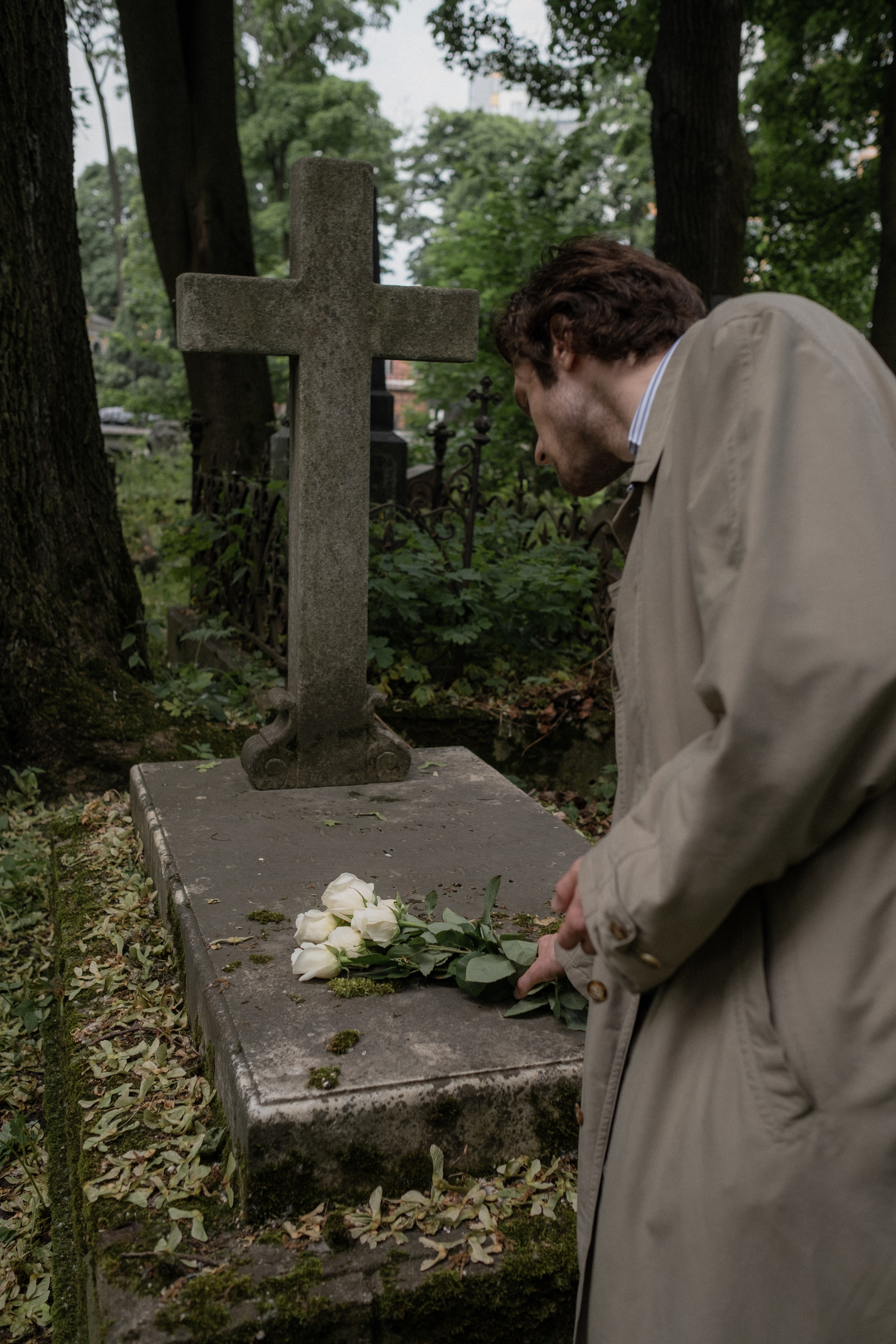
For illustration purposes only | Source: Pexels
It was the spring of 2016. Jordan was making cocktail shots behind the bar counter when his gaze fell on a young and beautiful Kyra. She was with her friends and was the noisiest in the gang. Jordan thought she was pretty and desired to date such a gorgeous woman but never found the means or time to do it. As days passed, Kyra began frequenting the bar, and Jordan was more than delighted to attend to her whenever she visited.
“One more Margarita on the rocks, please!” she often told him with a glossy smile flickering across her face. Kyra never even looked at Jordan ‘differently’ and only treated him as a kind, young bartender. But he had already fallen head over heels for her. He would leave for the night shift daily, rehearsing a smile and adjusting his hair, black bow tie, and muted gray shirt at least a dozen times, confident about impressing Kyra.
One night, Jordan was crushed after seeing her kissing another guy in the pub. Reality hit him hard when he understood Kyra was just treating him like a barkeeper and nothing special. Heartbroken, Jordan started keeping his distance from her, knowing she would never be his. However, one night, he could not hold himself back when he saw Kyra bitterly crying alone in the lounge.
“Miss, hey, are you alright?” he asked and saw her boyfriend, Shawn, dancing with another girl. Jordan’s heart melted, and he could partially guess what had hurt Kyra. Her eyes were puffy and red-rimmed. Streaks of warm tears ran down her cheeks, leaving discolored patches of smudged eyeliner on her makeup.
“I want to go somewhere…can you please take me away. I feel like dying,” she buried her face and wept into her palms. She cried her heart out to a stranger, but Jordan did not treat her like one. She meant more than anything else to him, so he was ready to do anything to calm her down.
He took an hour off and offered to drop her home as she was too drunk to leave alone.

For illustration purposes only | Source: Pexels
“Shawn and I have known each other for six months,” Kyra ranted, her breath stinking of alcohol. “That pervert! He dumped me for that stupid Lily…What does she have that I don’t? Jerk! He said he didn’t want to continue this with me. What an —”
“I’m so sorry for you. Be strong, Miss. It happens…and life has to go on. Maybe he doesn’t deserve you at all. It’s his loss…Please don’t cry. I’m always here as your friend whenever you need me, alright?”
Kyra nodded, her dewy-eyed stare fixed on Jordan before passing out on the seat. He awakened her upon reaching outside her house and helped her get out.
“Thanks, Jordan!” Kyra smiled through the fogged window of the car glass. “See you around!”
After that, their meetings became a ritual. Jordan and Kyra fell in love and started dating. They danced, toured across the night-lit streets of Manhattan, and kissed before saying I love you! He asked her to promise to quit drinking, and she agreed. She asked him to promise not to leave her like her ex-boyfriend, and he assured her that.
It had only been two weeks since their love story bloomed when Kyra told Jordan she was pregnant with his triplets and persuaded him to marry her. He was shocked because it happened too quickly. He was not prepared for this but was thrilled about becoming a father.

For illustration purposes only | Source: Unsplash
Soon, the couple married in a private ceremony, and it felt strange when nobody from Kyra’s family attended the wedding. Jordan knew nothing about her parents, and when he asked her, she told him they were dead. That was all he knew, and he did not bother her again because he didn’t want to hurt her. At that time, nothing mattered to him more than starting his life with her, and he blindly trusted her.
It all felt like a wicked joke now. Jordan kept staring at the wedding ring he was still wearing after Kyra’s death and understood she had always kept him in a web of lies.
“I was an IDIOT! Everything she told me was a LIE…Her love was a game…she married me because she needed a man to father SOMEONE ELSE’S KIDS.”
“I should’ve known the babies were not mine when she told me she was pregnant in just two weeks. I was so stupid! She cheated on me…that too with an old man. How disgusting!” he sniffled, tears endlessly spilling from his bloodshot eyes.
The babies suddenly woke up and started crying in the backseat. Jordan was so disturbed and upset, and he wished to run somewhere where he could no longer hear those cries. But at the same time, he could not start hating his babies just because someone told him they were not his. He was confused about the depth of truth in Denis’s claims, so he returned home immediately, still skeptical about the next step.

For illustration purposes only | Source: Pixabay
Jordan decided to forget about the encounter with the stranger and got to work. He put the babies in the crib, scooping one each at a time to remove their diapers. First went Alan, and then Eric, and then Stan. He bathed his babies and changed their diapers. He sang a lullaby, trying his best not to sound like a starving bear growling in the woods.
Once the three slept in their cribs after eating, Jordan started doing the dishes, and before he could finish, he smelled something burning. “Oh, damn, the spaghetti!” he shrieked, almost getting his fingers burnt while trying to remove the pan from the stove. He then remembered the laundry and ran upstairs to a bathroom overflowing with foam. Jordan had used too much detergent due to stress. It felt like it rained only problems in his life that day.
He saw it was almost time to hurry to the bar for the night shift. He then called Mrs. Wills, his elderly neighbor, to come over to watch the kids.
“Thank you, Mrs. Wills…I’ll be here till you come,” he told her and went to check his babies. They were fast asleep in their crib. Jordan was tormented at seeing them and could not be peaceful. Earlier, he felt he had the energy and spirit to do anything for his children. But now, everything seemed so different and sour, and Denis’s words kept ringing in his head.

For illustration purposes only | Source: Pexels
“Why did you do this to me, Kyra? I never lied or cheated on you…how could you do this then? You had always lied to me about everything, and I’m not able to tell which is true and which is not…even on the day you died, you told me you were at the party. I still don’t know where you went that night,” Jordan whimpered, tears running across his creases as he recalled the dark day that still haunted him.
It was a rainy night, and Jordan was restless as he kept looking out the window to see if Kyra had come. His phone started heating up due to his constant calls to all her friends, asking if she was with them. Kyra had told him she was at a friend’s party, but nobody had seen her around. Her phone was switched off, probably due to a dead battery, and Jordan began to panic as it was close to midnight. His newborn babies started crying. They were hungry, and he didn’t know how to calm them down.
Jordan had somehow put his babies to sleep. He took his phone to see if Kyra had called and got a call from the station instead.
“Yes, Jordan Fox here.”
“Mr. Fox, we are calling from the station. Could you please come to the morgue? We need help in identifying a woman’s body.”
Jordan started sweating as he rushed to the hospital after leaving his babies with his neighbor. He was called to identify a young woman’s body found in a car accident that night.
He slowed down and almost froze when the thin white sheet over the body was lifted for identification. Jordan’s heart sank, and it rained tears in his eyes. Kyra’s lifeless body lay still, and it was later revealed she was under drug overdose at the time of the crash.

For illustration purposes only | Source: Pexels
Jordan’s world changed after that. He felt numb, weak, and afraid to raise his babies alone. He was guilty for the one being alive, and at some point, his tears stopped due to anger. Jordan could not forgive Kyra for leaving him with such a massive responsibility on his shoulders. He couldn’t accept her loss and move on but forced himself to do it after seeing his children.
They were the only reason that kept him going. He vowed to himself he would do everything to give his kids a good life. Jordan did not date any other woman after that because he still loved Kyra. He still wore their wedding ring and believed she had gone nowhere.
He stepped into the shoes of both mother and father for his three little sons and devoted his entire life to them. Jordan shuttled between work and his babies and barely found any time for himself. He had forgotten what a restful night looked like. He stopped chilling with his friends and started living a life that was more about his babies than about himself.
But now, after learning he was not their real father, he started doubting if he could see them the same way again and if he would genuinely want to spend his time and energy raising them.
“I can’t do this anymore…I just can’t,” Jordan stammered, shoving his chair, its legs scraping against the wooden floor, waking his babies up. A strange thought struck his mind as he slammed the door shut and walked away without even saying his usual “Thanks and have a good day!” to his neighbor Mrs. Wills when she came to watch over the kids.
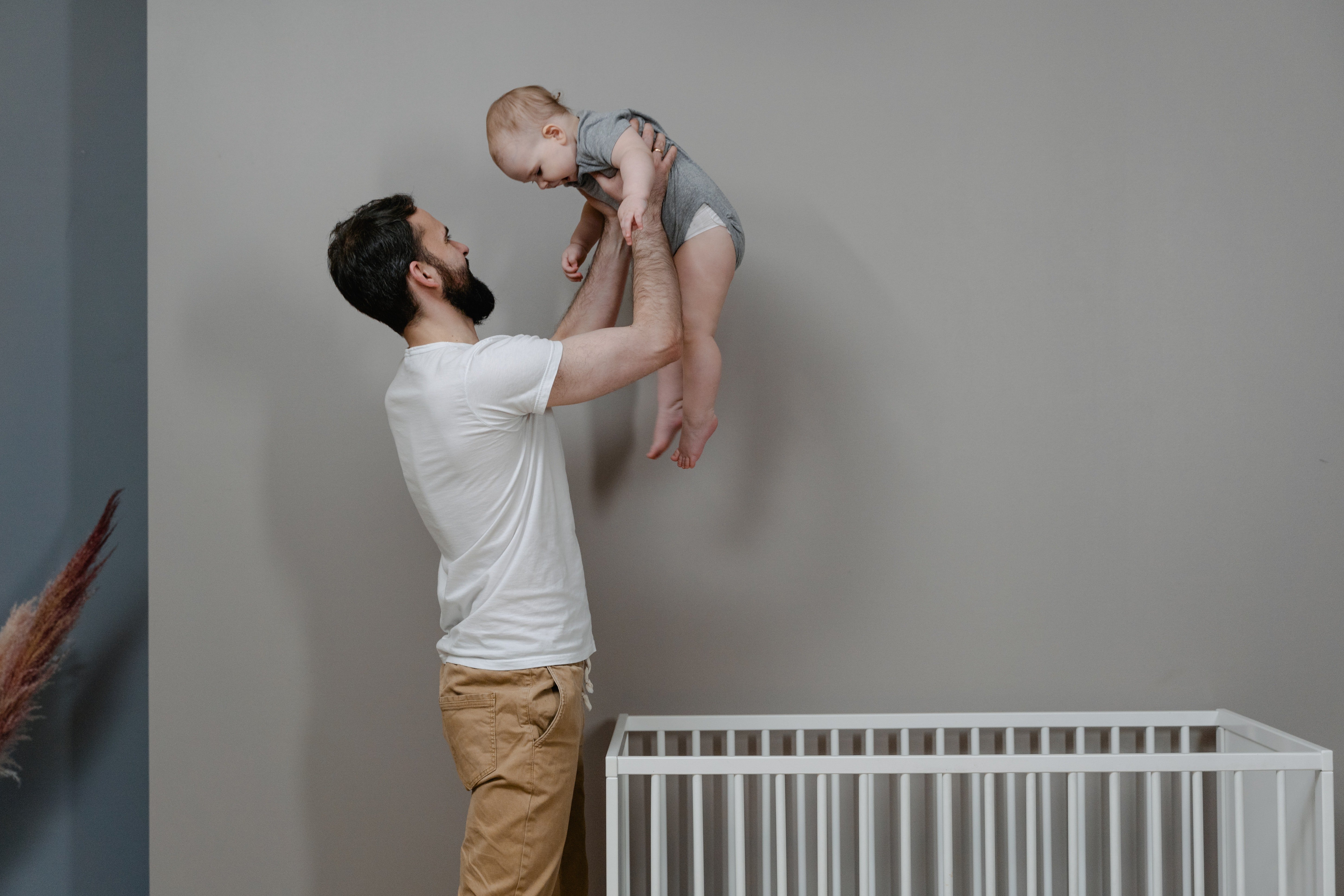
For illustration purposes only | Source: Pexels
Jordan could not be peaceful that entire night in the pub. He returned home after his shift but went straight into his room to find Denis’s card. He didn’t even stop to look at his babies or cuddle with them like usual.
Jordan came out of his room minutes later, his gaze shifting to the three little ones gesturing at him and babbling ‘Da-Da’ in their baby language, asking him to carry them.
Jordan’s heart sunk to the ground. “How could I…How could I even think about abandoning you? I cannot live without you guys…you are my everything…God, how did I even think of leaving them?” he cried, his eyes now focused on the call that was already connected to Denis.
“Hello? Hello…anyone there?” the faint voice of the older man seeped through the phone.
“Mr. Roberts, it’s me, Jordan.”
“I was waiting for your call, Mr. Fox. I’m so happy you called me…finally! So, what have you decided? When shall I meet you with the check and take the babies?”

For illustration purposes only | Source: Getty Images
“I’m sorry, Mr. Roberts…but I cannot accept your offer. A father is one who raises his children — not necessarily the one who gives birth. I may not be their real father, but they are still my children. I cannot imagine a life without them,” Jordan said sternly and politely.
“Mr. Fox…wait a minute…please. Look, we can talk about this again, alright? You don’t understand…I want my babies. I cannot live without them.”
“I’m sorry, Mr. Roberts. Even I cannot live without them. They are my world. And I don’t want your money. You cannot trade love for money.”
“I’ll tell the kids about you once they are big. It’s up to them to decide who they choose. But I cannot send them to you because I love them and am THEIR FATHER! Goodbye!”
Denis was disheartened. “Fine, if that’s your decision. But can we meet tomorrow at the café…or maybe at your place? You decide.”
“I’m sorry, Mr. Roberts, but I’m busy tomorrow. I don’t think I can…”
“Don’t you want to know the truth fully, Mr. Fox? I have only told you a part of it. There’s still something else you don’t know yet.”
Jordan agreed, catching his breath, surprised by the strangeness of Denis’s question. He took a night shift off the next evening and eagerly waited for the man to meet him at his house.

For illustration purposes only | Source: Pexels
Denis showed up a couple of hours later with several boxes. “Just some new sweaters, diapers, and blankets for the babies!” he laughed as he hung his overcoat on the hanger and made himself comfortable. Denis’s gaze fell upon the empty crib, and he understood Jordan had kept his kids away somewhere, far from his sight and grasp.
Jordan hated the silence around. He was impatient to know about the ‘truth’ the man had bragged about, and after a few seconds of only staring at each other, he broke the guy’s silence.
“So…what is it? You said I still need to know something.”
Denis grimly smiled before flapping open his blazer and taking out an old photo. He kept staring at it, and Jordan felt it was weird.
“Mr. Roberts…what is it? Look, I don’t have time, and I’d appreciate it if you make it fast.”
Suddenly, tears started streaming down Denis’s face. He could not hold them back while his gaze was still fixed on the photo.
“Mr. Fox, the babies with you are not yours…they are not mine either. Actually, I’m their GRANDFATHER!”
Denis then handed Jordan the picture of him with Kyra and rose, tearfully making his way to the window.
“Oh my God…Where were you all these days…Kyra told me her parents were DEAD…She never told me anything about you. What happened to you? Why didn’t you come for her funeral?”

For illustration purposes only | Source: Pexels
“I was such a bad father, Mr. Fox,” cried Denis. “I did something no father would do to his child.”
“After my wife died, I raised my daughter alone. I gave her everything…love, money, and education. I wanted her to live a life I had envisioned, but she lost track and fell astray with her addiction issues.”
“I wanted to send Kyra to rehab and even threatened to disinherit her. But she refused, and things went downhill after that. She started coming home late, and I’d see a random boy dropping her home every night. My name and reputation were getting spoiled, so I kicked her out. She was so furious, and before leaving, she told me I was the worst father and told me not to look for her. I thought she would get back once her money ran out, but she never did. I’m not able to forgive myself for not trying to help my child. I abandoned her, and now she’s gone forever.”
“But how did you find me? And how did you know that the babies aren’t mine?” Jordan interrupted Denis, curious to piece the puzzle together.

For illustration purposes only | Source: Pexels
“I didn’t even know my daughter was married, had children, and had died until I recently met Amy, her best friend in Chicago…She told me about you and the babies, so I flew here right away to meet you,” Denis said.
“When she was pregnant, Kyra met her friend and confided her fears. She had told Amy she was afraid you would leave her if you found out the babies weren’t yours.”
“Oh my God…are these her ex-boyfriend Shawn’s children, then?” Jordan was startled.
“I’m not sure about that because my daughter had told Amy she had dated and broken up with three other men around the same time she married you. Kyra herself was not sure who the father was. We still don’t know the real father, and we don’t want to know that,” Denis cried.
“All I can say is I’m happy my grandsons are with a man they can call ‘Dad.’ Mr. Fox, only you can love and raise them well. I am sorry for lying to you that I was their father. I don’t know what got into my head. I was afraid you’d not allow me to raise them, and I knew I’d never get their custody unless you gave them away. That’s why I offered you money. I’m sorry. I’m guilty, and I have no tears left to cry. I’m getting older and only wish to be part of my grandchildren’s lives. I was not a good father, but I wish to be a good grandfather.”
Jordan spoke no more and hugged Denis. It was the least he could do to comfort the grieving old man who could not forgive himself for leaving his daughter’s side when she needed him the most.
With time, Denis started visiting Jordan and the kids often and, at some point, even decided to move in with them. He treated Jordan as his son and was pleased to be a part of his grandchildren’s upbringing.

For illustration purposes only | Source: Getty Images
What can we learn from this story?
- A real parent is not just one who gives birth but one who raises their children with love and care. When Jordan learned he was not the biological father of his triplets, he decided to put things in place by giving them away to Denis, who claimed to be their birth father. But then, Jordan changed his mind, telling Denis that a real father is one who raises his kids and not just one who gives birth.
- Do not make a hasty decision that could make you regret it for a lifetime. When Denis was unable to cope with his daughter’s addiction issues, he told her to go to rehab. When she refused, he kicked her out, knowing little he would never get another chance to see her again.
Tell us what you think, and share this story with your friends. It might inspire them and brighten their day.
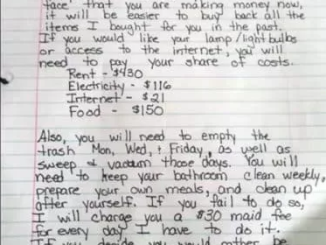
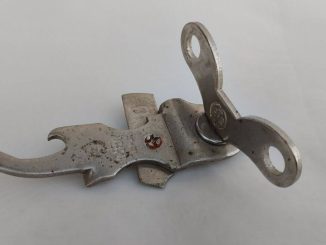

Leave a Reply